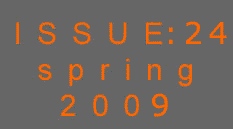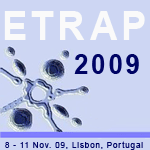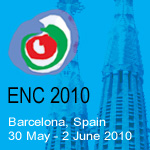
Book sheds new light on how France perceived the facts, fiction and controversy surrounding the Chernobyl catastrophe.
The French specialist publication Revue Générale Nucléaire has written a review of a recently published book on the facts, fiction and controversy surrounding the Chernobyl accident and on the impact that it had on French public consciousness and the media. Its analysis, unlike that favoured by the majority of books written on the subject, is free of preconceived ideas and ideological anti-nuclear bias. I translated the Revue Générale du Nucléaire text so that ENS NEWS could read about the book, draw their own coclusions and, if they are interested, get a copy of the publication. And here it is…..
Mark O’Donovan.
Chernobyl, a "cloud" passes by...: Facts and
controversy”
By Bernard Lerouge
What do the majority of French people remember about the radioactive fall-out from the Chernobyl accident that reached France? First of all is the memory of how the authorities attempted to hide from them the truth that a “radioactive cloud” was passing overhead by claiming it had “not crossed the border.” Secondly, is the resultant epidemic of thyroid cancers that hit France, an opinion that was shared by a majority of GPs.

Do these conclusions, however, reflect reality or are they simply an expression of preconceived ideas? In his book entitled Chernobyl, a “cloud” passes by...: Facts and controversy Bernard Lerouge, who witnessed first hand the hard work done by his former colleagues at the IPSN (the Institut de Protection et de Sûreté Nucléaire - France’s Institute for Protection and Nuclear Safety) during the crisis of April and May 1986, looks back at these events. It is the first time that a book on the subject does not reflect the views of a hard-bitten anti-nuclear campaigner. The main strength of his book, which was written with the help of Pierre Schmidt, the former Director of the Superphoenix and Professor Yvon Grall, former Head of the Nuclear Medicine at the Lariboisière Hospital, is above all the serious historical research that went into writing it. That research is based on numerous documents and personal accounts that have been recorded. The research was as dispassionate as possible, but was not void of either critical analysis or humour.
It is very instructive to be reminded, in the first part of the book, of how the reactions of experts and the media evolved, day by day, in the aftermath of an event that was as unique as it was unexpected. When the cloud first reached the French Riviera, on the evening of 30 April, French citizens had already made plans to make the most of a four-day holiday period. The result was administrative and political inertia. Senior journalists were away. Monaco’s marine ecology laboratory detected and quantified initial levels of contaminated air. The SCPRI (France’s “National Centre for the Protection against Ionising Radiation”) confirmed at midnight an increased level of radioactivity in the air and the following day announced that this had spread to the rest of the country.
But the announcements made on national radio on 1 May and in the press on 2 May prove that news of the event had not been hidden from the public, a fact which is confirmed by the following newspaper headlines: France is also affected (Le Figaro), Radioactive clouds above France (France-Soir). Following the results of tests that were carried out day and night on water and milk samples (some results were published on 6 May), Professor Pellerin, Director of the SCPRI, judged that the levels of radioactivity measured were too low to represent a danger to the public and considered, therefore, that no protective measures were required in France.
After the national news bulletin of 10 May on TF1 (one of France’s national public TV channels), during which Professor Pellerin presented an overview of atmospheric developments and showed charts summarising contamination levels in France, gullible journalists came to the conclusion that the initially announced “radioactive particles” were part of a disturbing “radioactive cloud.” They denounced what they claimed was a “radioactive lie.” It is interesting to read how events that happened elsewhere at that time supported this thesis. Because some neighbouring countries had taken precautionary measures but France hadn’t, the government was accused of passivity and the ironic catchphrase “It’s as if the cloud had never crossed our borders!” achieved widespread notoriety.
The second part of the book focuses on the many scientific controversies that were debated at length to determine the degree of radioactive fall-out and the associated health risks. The issues discussed included food safety standards, soil contamination (initially underestimated, this issue helped give media notoriety to an association called CRIIRAD), food contamination, absorbed dosage levels and the effects of low-level radiation (a key question that continues to be debated today).
The appearance in 1990 of a series of thyroid cancer cases in children from the ex- Soviet Union revived the debate over the possible consequences of Chernobyl in our country. In 2001 and 2002, more than 500 sick people filed complaints against the state, which was accused of having failed to put any precautionary measures in place in 1986. It is true that thyroid cancer cases did increase in our country, but medical experts emphasised that the phenomenon involved adults not children (epidemiological studies in the Champagne, Ardennes and Franche-Comté region illustrated this fact), a fact that was also observed in other countries unaffected by the radioactive cloud. And the cases weren’t related to Chernobyl. The voice of the experts was barely heard. The communications strategy was hardly brilliant, everyone accepts that, but wasn’t Professor Pellerin basically right after all?
The third part of the book considers the reaction of the media and analyses it critically. Fearing that any underestimating of the health consequences of the accident might be deemed scandalous the media – sadly - chose to highlight the most pessimistic estimates put forward by the anti-nuclear lobby, whose voice was, a priori, considered more credible. It became politically correct to fear radiation, whatever the level of intensity, while ignoring that radioactivity is present everywhere in nature and creates its own reference levels for assessing how harmful it is.
Television documentaries, which were more often than not biased, manipulated public opinion by not featuring the opinions of the competent scientific community. How can television channels give a virtual monopoly of expression on the subject to people (whether of a scientific background or not) who have never studied biology or medicine? Clearly, the media does not feel at home with science and is not likely to help it find its rightful place in our society. Why is this? This is what the final part of the book explores.
In conclusion, this well-researched work, with its numerous scientific annexes, will fascinate all those who are interested in knowing the real truth. Its general appreciation of the subject will also interest a wider public.
Biographical details:
Bernard Lerouge is a former physician who specialised in nuclear reactors and was working at the CEA (Commissariat à l’Energie Atomique) in 1986. He also worked on providing advice to Eastern European countries on matters regarding nuclear safety.
Professor Yvon Grall is the former Head of Nuclear Medicine at the Lariboisière Hospital, where he worked very closely with the Radio-toxicological Research Centre and France’s National Academy of Medicine.
Pierre Schmidt is the former Director of the Creys-Melville nuclear power plant (aka Superphénix), which is located in a region affected by the radioactive fall-out in the Chernobyl “cloud.”
|





